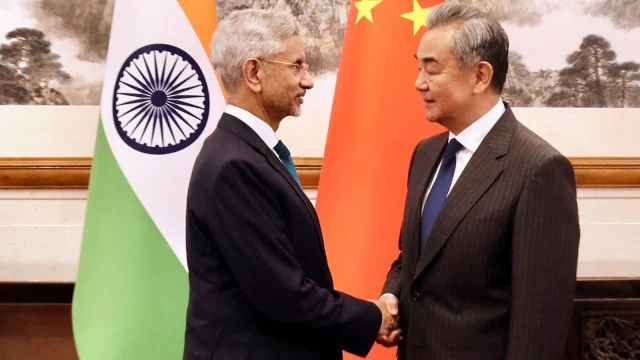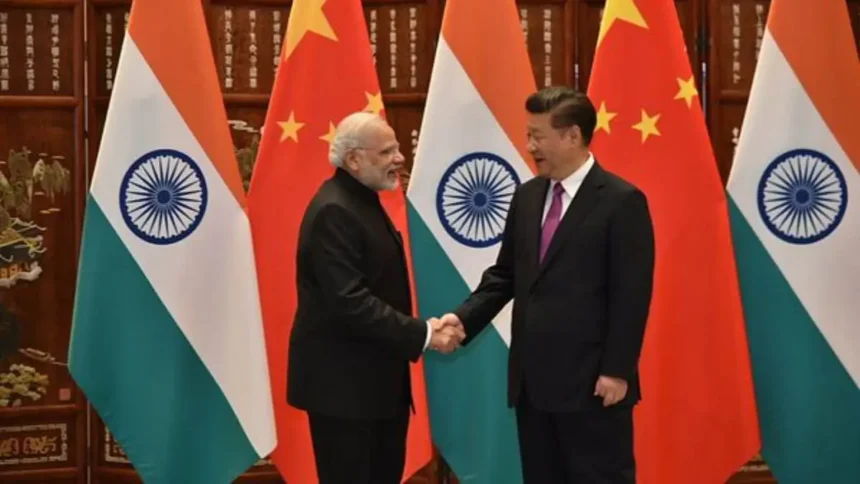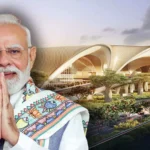Introduction: India-China Ties
India and China are two of the world’s oldest civilizations and modern-day superpowers, whose relationship has been shaped by several thousand of years of history, trade, spiritual exchange, and, most recently, intense geopolitical friction. By 2025, their relationship has drawn world attention, particularly in light of External Affairs Minister Dr. S. Jaishankar’s recent statement: “We have made progress, but peace at the border is the key to normal relationships between neighbors.”
This news item, which was widely reported on as part of Latest News India, has emerged at a time when the two Asian neighbors are hoping to move forward, but not easily forgetting the past. The article aims to provide a comprehensive examination of India-China ties or relations today, which will demonstrate particular emphasis on the topics of border de-escalation, the diplomatic landscape, and ongoing prospects.

A Brief History of India-China Relations
India and China are not new to each other. Shared historical moments between India and China include Buddhist monks, trade in silk, and intellectual exchanges. However, they have experienced a more complicated modern history.
Key Milestones:
- 1950s: India recognizes the People’s Republic of China. “Hindi-Chini Bhai Bhai” became a slogan.
- 1962: The Sino-Indian War ends in defeat for India and long-term mistrust.
- 1993-1996: Peace agreements signed to manage border tensions.
- 2000s–2019: Trade flourishes despite unresolved border disputes.
Yet, just when ties seemed stable, 2020 brought a chilling reminder that the border remains a flashpoint.
The Border Dispute: A Deep Rooted Issue
The Line of Actual Control (LAC) is not an internationally recognized border. Its vagueness has led to multiple disputes, especially in:
- Eastern Ladakh (Western Sector)
- Arunachal Pradesh (Eastern Sector)
Both countries claim large portions of land and blame each other for “transgressions.”
Key Friction Points:
- Pangong Tso – Strategic lake straddling both countries
- Galwan Valley – Scene of the 2020 clash
- Hot Springs – Another site of military standoff
Depsang and Demchok – Areas where talks have failed
Galwan Valley: The 2020 Turning Point
In June 2020, Indian and Chinese soldiers clashed violently in Galwan Valley. It was the first deadly conflict in over four decades, killing 20 Indian soldiers and an unknown number of Chinese troops.
This changed everything:
- Diplomatic talks intensified
- Army deployments increased
- Economic decoupling calls grew in India
- Public trust hit rock bottom
Dialogue & Diplomacy: The Long Road Since 2020
Since the Galwan clash:
- 21 rounds of Corps Commander-level talks have taken place
- WMCC meetings (Working Mechanism for Consultation & Coordination) are ongoing
- Partial disengagement occurred in Galwan, Pangong, Gogra
- No agreement yet on Depsang and Demchok
Both sides stress peace, but progress has been slow and cautious.
Jaishankar’s 2025 Statement: What It Means
In July 2025, Dr. S. Jaishankar delivered a message that was firm but balanced: “We want better relations. But how can we have that when soldiers are looking at each other at the LAC?” This reflects India’s essential position: until the border is peaceful, full normalcy in relations cannot be achieved. Jaishankar’s remarks are more than just words they indicate:
- A continued emphasis on territorial integrity
- India’s unwillingness to decouple economic ties with security concerns
- A message to the greater global community: India remains steadfast
Trade Relations: A Complicated Affair
Despite tensions, India-China trade has grown, reaching over $118 billion in 2024.
India imports from China:
- Electronics
- Machinery
- Chemicals
India exports:
- Iron ore
- Pharmaceuticals
- Cotton
Indian startups and industries are reducing dependence, but full decoupling is difficult.
Global Power Balance and India’s Strategy
India is playing a balancing act. It strengthens ties with:
- United States (Quad, Indo-Pacific)
- Japan, Australia, Vietnam
- Russia and Central Asia (BRICS+, SCO)
At the same time, India keeps talking with China as a sign of maturity in diplomacy.
The Mood in Both Nations
In India, post-2020 surveys show:
- Over 70% of people distrust China
- Public backs tough action on the border
In China, the state controls media and narratives. National pride and control of Tibet remain key priorities.
India’s Military Readiness
The Indian Army has:
- Built border roads and bridges (Atal Tunnel, Darbuk-Shyok-DBO Road)
- Improved satellite surveillance and drone monitoring
- Deployed Rafale jets and enhanced air bases in Ladakh
Troops are ready for both defense and dialogue.
China’s Moves: Infrastructure & Strategy
China has:
- Built airstrips, helipads, roads on its side of the LAC
- Increased PLA presence in Tibet
- Installed high-altitude surveillance systems
It follows a “two-face” strategy: one of negotiation, the other of pressure.
Strategic Tech Race
India’s DRDO, ISRO, and private defense startups are:
- Developing border surveillance drones
- Launching high-resolution satellites
- Working on AI-based threat detection
This is a silent tech race with China but a crucial one.
Future Scenarios
Experts say:
- Best-case: Full disengagement, long-term peace, trade rebalancing
- Worst-case: Another Galwan-like clash, breakdown of talks
- Middle-ground: Controlled rivalry, strong deterrence
India prefers dialogue but not at the cost of dignity.
Expert Views
Lt. Gen. DS Hooda (Retd):
“India must remain firm. Talks should continue, but with clear red lines.”
ORF Report (June 2025):
“The next 12 months are crucial. China is watching how India handles elections, economy, and defence buildup.”
What Will Build Real Peace?
More Read
For peace to return, experts say both nations must:
- Agree on LAC clarity
- Disengage fully at remaining flashpoints
- Hold regular border meetings
- Reduce media propaganda
- Promote student, cultural, and scientific exchanges
But all of this requires trust which remains fragile.
In The End
Relations between India and China in 2025 do not represent merely two nations; they represent the future of Asia.
India wants peace, but is not naive about it.
China must understand that cooperation is not compatible with confrontation.
As External Affairs Minister Dr. Jaishankar put it more succinctly, “The key is: peace at the border is not optional.”










